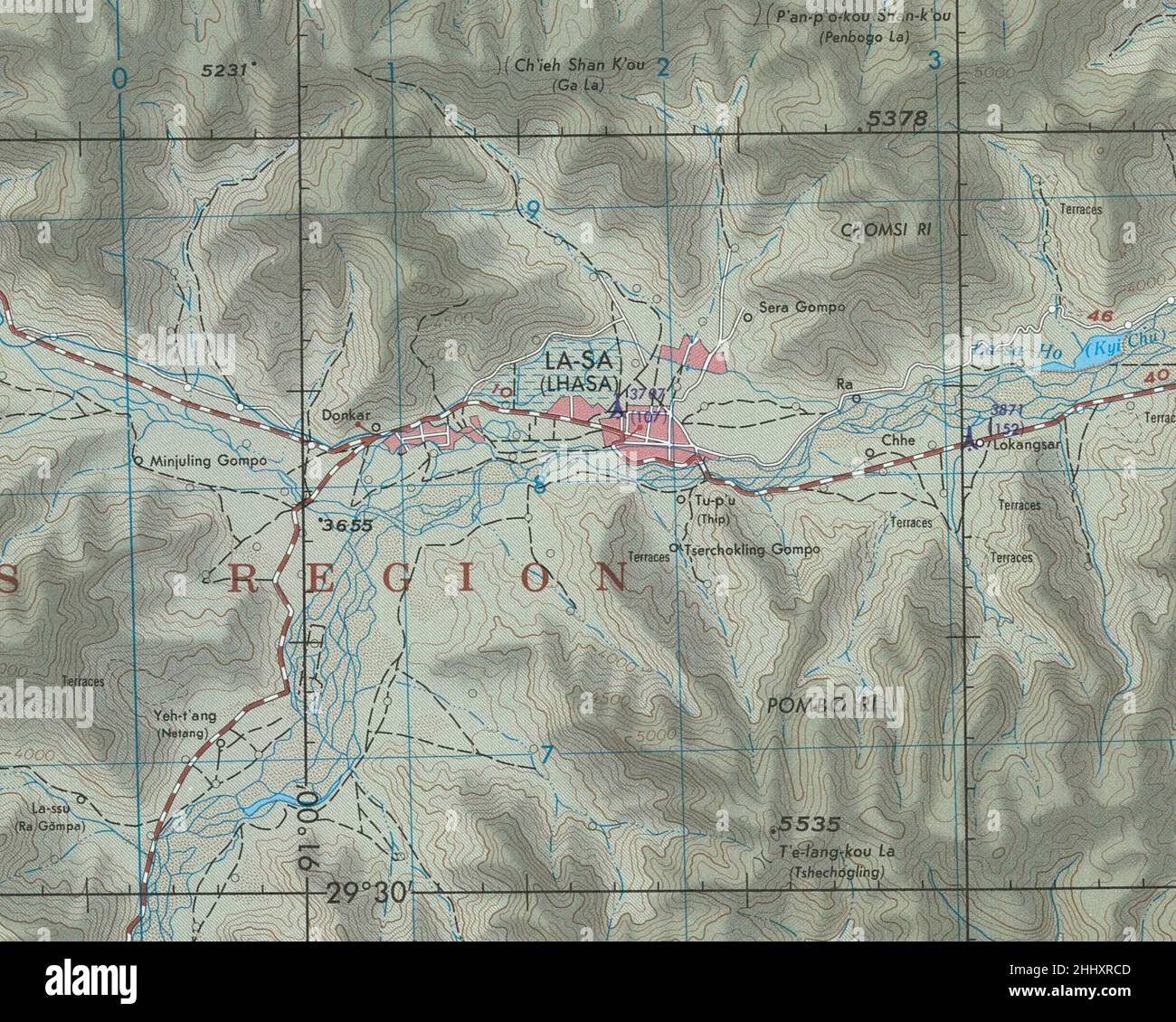Mapping Lhasa: A Journey Through Tibet’s Spiritual Epicenter

Lhasa, the capital of the Tibet Autonomous Region in China, is a city of immense spiritual and cultural significance. It is the heart of Tibetan Buddhism and the home of the Dalai Lama, the spiritual leader of Tibet. For centuries, Lhasa has been a pilgrimage site for Tibetan Buddhists and a destination for travelers seeking to explore the unique culture and traditions of Tibet.

The city is dominated by the Potala Palace, a UNESCO World Heritage Site and the former residence of the Dalai Lama. This massive palace is a testament to the architectural and artistic achievements of Tibet and is a must-see for any visitor to Lhasa.

Other important religious sites in Lhasa include the Jokhang Temple, the oldest temple in the city and the spiritual center of Lhasa; the Sera Monastery, one of the largest and most important monasteries in Tibet; and the Drepung Monastery, once the largest monastery in the world.
In addition to its religious significance, Lhasa is also a vibrant and cosmopolitan city. The city’s Barkhor Street is a bustling market area where pilgrims and tourists can buy souvenirs, handicrafts, and Tibetan art. There are also many restaurants and cafes in the city, where visitors can sample the local cuisine and enjoy the city’s vibrant atmosphere.
For those interested in learning more about Tibetan culture and history, there are several museums in Lhasa, including the Tibet Museum, which houses a collection of Tibetan artifacts and artwork; the Norbulingka Museum, which is dedicated to the life and work of the Dalai Lama; and the Tibetan Medical and Astro Institute, which teaches traditional Tibetan medicine and astrology.
Whether you are a pilgrim, a traveler, or simply someone interested in learning more about Tibetan culture, Lhasa is a city that is sure to leave a lasting impression. Its stunning scenery, rich history, and vibrant culture make it a must-visit destination for anyone traveling to Tibet.
Navigating Lhasa
Lhasa is a relatively easy city to navigate, especially for those who are familiar with Chinese or Tibetan. There are a number of public transportation options available, including buses, taxis, and rickshaws. The city is also relatively compact, so it is easy to get around on foot.
However, there are a few things to keep in mind when navigating Lhasa. First, the city is located at a high altitude (3,650 meters above sea level), so it is important to acclimatize yourself to the altitude before embarking on any strenuous activity. Second, the city’s streets can be very crowded, especially during the pilgrimage season, so it is important to be patient and allow yourself plenty of time to get around.
Finally, it is important to be respectful of Tibetan culture and customs. For example, it is considered disrespectful to point at or touch religious objects. It is also important to dress modestly when visiting temples and monasteries.
Tips for Visitors
- Be sure to acclimatize yourself to the altitude before embarking on any strenuous activity.
- Allow yourself plenty of time to get around the city, as the streets can be very crowded.
- Be respectful of Tibetan culture and customs.
- Dress modestly when visiting temples and monasteries.
- Learn a few basic Tibetan phrases, such as “hello,” “thank you,” and “goodbye.”
- Be prepared for the cold weather, especially at night.
- Bring sunscreen and sunglasses, as the sun can be very strong at high altitudes.
- Drink plenty of water to stay hydrated